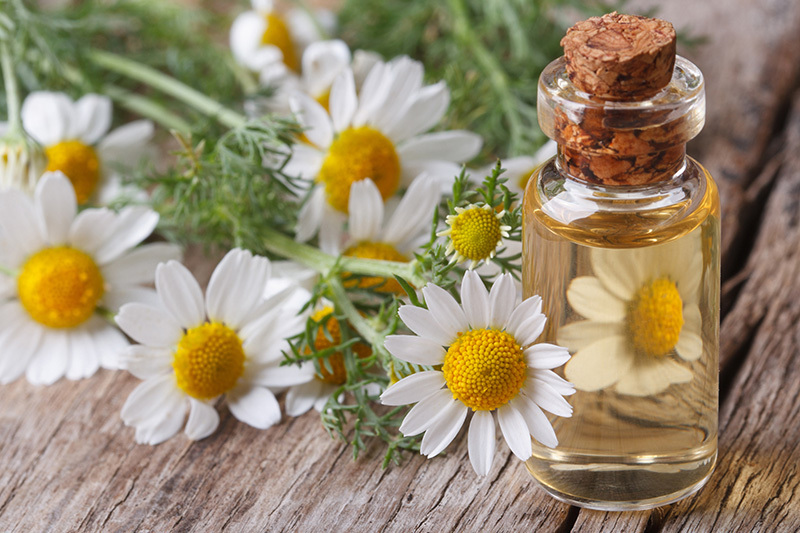Nurture Hydrangeas: Achieve a Garden of Colors
Posted on 14/08/2025
Nurture Hydrangeas: Achieve a Garden of Colors
Hydrangeas are renowned for their luscious blooms and magnificent colors. These versatile, long-blooming shrubs can transform any garden into a vibrant, eye-catching haven. In this comprehensive guide, you'll learn how to nurture hydrangeas, select the best varieties, and achieve a breathtaking garden of color.
Why Choose Hydrangeas for Your Garden?
Hydrangeas are a gardener's dream due to their stunning flower clusters, adaptability, and extended blooming season. Their appeal lies in their ability to change color based on soil composition, creating a dynamic and ever-evolving display. Whether you desire a sea of blue, a blush of pink, or a snowy white landscape, hydrangeas make it possible.
- Wide color range: Blossom shades from blue, pink, white, and purple.
- Low maintenance: Suitable for beginner and experienced gardeners alike.
- Long-lasting blooms: From late spring until the first frost.
- Variety of shapes and sizes: Perfect for borders, containers, or specimen plants.

Hydrangea Varieties: Choosing the Right Type
Several hydrangea species are suitable for different garden settings. Understanding the features of each helps you select the best hydrangea varieties for your landscape.
1. Hydrangea macrophylla (Bigleaf Hydrangea)
- Bloom: Large rounded or lacecap flowerheads.
- Color: Blue, pink, or purple, often influenced by soil pH.
- Use: Borders, foundations, accent plants.
2. Hydrangea paniculata (Panicle Hydrangea)
- Bloom: Cone-shaped clusters, turning from white to pink as they age.
- Color: White, green, cream, or pink.
- Use: Larger spaces, hedges, statement shrubs.
3. Hydrangea arborescens (Smooth Hydrangea)
- Bloom: Fluffy, spherical clusters.
- Color: Mostly white or pale green.
- Use: Woodland gardens, naturalized landscapes.
4. Hydrangea quercifolia (Oakleaf Hydrangea)
- Bloom: Panicle-shaped, often elongating with age.
- Color: Cream to deep rose.
- Use: Shady gardens, seasonal foliage color.
5. Hydrangea serrata (Mountain Hydrangea)
- Bloom: Compact lacecap.
- Color: Blue or pink hues, changing with soil pH.
- Use: Small gardens, containers.
Selecting the Perfect Site for Your Hydrangeas
Site selection plays a crucial role in nurturing hydrangeas successfully. These plants thrive in locations that mimic their natural woodland habitat--moist, rich, and well-drained soil with dappled sunlight.
- Light: Morning sun and afternoon shade is ideal. Too much sun can scorch leaves; too little reduces flowering.
- Soil: Loamy, well-drained soil rich in organic matter.
- Protection: Shelter from strong winds prevents broken stems and desiccation.
- Space: Allow adequate spacing for air circulation and mature growth.
Planting Hydrangeas: Step-by-Step Guide
Correct planting ensures your hydrangea's health and vigor. Follow these steps for the best results:
- Dig a hole: Two times the width of the root ball and as deep as the pot.
- Prepare the soil: Mix compost or well-rotted manure into existing soil.
- Remove the plant: Gently slide the hydrangea from its container, teasing roots if root-bound.
- Set the plant: Place at the same depth it grew in its pot. The crown should not be buried.
- Backfill and water: Fill in around roots, gently firm, and water thoroughly.
- Mulch: Add a 2-3 inch mulch ring, avoiding direct contact with the stem.
Watering and Fertilizing Hydrangeas
Watering:
Hydrangeas prefer consistently moist soil. Drought can lead to wilting and reduced blossom production.
- Frequency: Water deeply 1-2 times per week, more during hot spells.
- Time: Morning watering reduces fungal risks.
- Mulch: Helps retain moisture and keep roots cool.
Fertilizing:
To promote lush foliage and abundant blooms, fertilize in spring and early summer. Opt for a balanced, slow-release fertilizer or a formula designed for blooming shrubs.
- Bigleaf and mountain hydrangeas: Use fertilizer low in phosphorus to enhance coloration.
- Other hydrangeas: Standard shrub fertilizer or compost works well.
Avoid over-fertilizing, as excess nutrients can lead to more leaves at the expense of blooms.
How to Change Hydrangea Flower Color
One of the most fascinating aspects of hydrangea plants is their ability to change flower color based on soil chemistry. This magic happens mainly in bigleaf (macrophylla) and mountain (serrata) varieties.
Adjusting Soil pH
- For Blue Flowers: Lower soil pH (make it more acidic) to 5.2-5.5. Add aluminum sulfate or sulfur to the soil.
- For Pink Flowers: Raise soil pH (make it more alkaline) to 6.0-6.2. Use lime or dolomitic lime.
- For Purple Hues: Aim for a pH between the extremes or experiment with smaller amendments.
Tips for Color Changes:
- Test soil pH annually for accuracy.
- Change may take a full season or more to become evident.
- White-flowered hydrangeas won't change color based on soil pH.
Pruning Hydrangeas for Vibrant Blooms
Understanding when and how to prune hydrangeas is essential for maintaining shape and encouraging prolific blooming. Pruning methods vary by hydrangea type, so it's essential to know your variety.
Pruning Bigleaf and Mountain Hydrangeas (Old Wood Bloomers)
- Prune right after flowering in summer.
- Trim only dead or crossing stems and spent blooms.
- Avoid heavy pruning, as flowers develop on the previous season's wood.
Pruning Panicle and Smooth Hydrangeas (New Wood Bloomers)
- Prune in late winter or early spring before growth resumes.
- Cut back stems to 1-2 feet for compact plants and bigger blooms.
Oakleaf Hydrangeas
- Prune sparingly just after blooming.
- Avoid severe pruning to encourage natural, rustic form.
Dealing with Pests and Diseases
To nurture hydrangeas effectively, proactive pest and disease management is crucial. Hydrangeas can be vulnerable to several common issues, but most problems are easily mitigated with proper care.
- Pests: Watch for aphids, spider mites, and scale insects. Treat with insecticidal soap or neem oil if infestations occur.
- Diseases: Leaf spots, powdery mildew, and root rot may arise, especially in poorly drained soils. Ensure good air flow and avoid overhead watering.
- Animals: Deer can nibble hydrangeas; use repellents or fencing in high-risk areas.
Sustainable Care: Organic Hydrangea Nurturing Tips
Creating a colorful hydrangea garden organically promotes not just plant health, but also benefits pollinators and the ecosystem.
- Compost regularly: Enrich soil with homemade compost to support microbial life and steady fertility.
- Natural mulches: Use shredded leaves or bark to retain moisture and suppress weeds.
- Rainwater harvesting: Use rain barrels to water hydrangeas, providing chlorine-free hydration.
- Integrated Pest Management (IPM): Employ beneficial insects and manual removal before using organic sprays.
- Minimal disturbance: Avoid excessive soil disturbance to protect beneficial earthworms and microbes.
Hydrangeas in Container Gardens
You don't need an expansive garden to enjoy hydrangeas--a vibrant display is possible with potted hydrangea care. Select compact varieties like 'Mini Penny' or Hydrangea serrata for best results.
- Choose large containers: At least 18 inches across, with drainage holes.
- Potting mix: Use high quality, moisture-retentive, yet well-draining soil.
- Water frequently: Containers dry out more quickly than garden soil.
- Feed: Incorporate slow-release fertilizer or liquid feed during the growth season.
- Winter care: Move containers to sheltered locations or insulate against frost.
Extending the Season: Hydrangea Cut Flowers and Drying
Hydrangeas are not just for the landscape--they make exceptional cut flowers and can be dried for winter arrangements. Follow these tips for harvesting and preserving your blooms:
- Harvesting: Cut flowers early in the morning when fully mature and petals feel papery.
- Bouquets: Remove leaves and place stems in clean water, changing regularly.
- Drying: Hang upside down in a warm, dry location or allow heads to air-dry in vases with minimal water.
- Color preservation: Drying hydrangeas at their peak color helps maintain vibrancy in arrangements.
Frequently Asked Questions: Nurture Hydrangeas Successfully
1. How much sunlight do hydrangeas need?
Most hydrangeas thrive in morning sun and afternoon shade. Panicle hydrangeas tolerate more sun, while bigleaf and oakleaf varieties prefer partial shade.
2. When is the best time to plant hydrangeas?
Plant in spring or fall, when temperatures are cool and rainfall is more predictable. Avoid planting during the high heat of summer.
3. Can I grow hydrangeas indoors?
While some novelty varieties are sold as indoor plants, most hydrangeas require outdoor conditions and seasonal dormancy for vigorous growth.
4. Why are my hydrangea flowers not blooming?
Common causes include improper pruning, insufficient sunlight, winter damage, or over-fertilizing with high-nitrogen fertilizer. Confirm your hydrangea species for correct pruning timing.

Designing a Hydrangea Garden for Color Impact
To cultivate the most colorful hydrangea garden, combine different species and utilize thoughtful design strategies.
- Plant clusters of each type for a layered effect.
- Position white or light-colored hydrangeas in shadier areas to brighten spaces.
- Use blue and pink bigleaf hydrangeas as focal points or to frame a garden path.
- Mix panicle hydrangeas for late summer color and height.
- Pair hydrangeas with hostas, ferns, and shade-loving annuals for year-round interest.
Conclusion: Achieve Your Dream Hydrangea Garden
By applying the best hydrangea nurturing tips, you can easily transform your landscape into a spectacular garden of colors. From site selection to pruning, soil amendments, and organic care, every step enhances your garden's vibrancy and resilience. Whether in borders, containers, or as cut flowers, hydrangeas offer beauty, versatility, and enduring charm. Start nurturing your hydrangeas today, and soon you'll enjoy a symphony of colors that delights all who visit your garden!
Sources for Further Reading:
- Clemson Cooperative Extension - Hydrangea Fact Sheet
- Gardener's Supply Company - Growing Hydrangeas Guide
- Royal Horticultural Society - Hydrangea Growing Guide
Latest Posts
Quick and easy steps to maintaining your flowers' radiance
Nurture Hydrangeas: Achieve a Garden of Colors
The Allure of Red Roses and Valentine's Day





